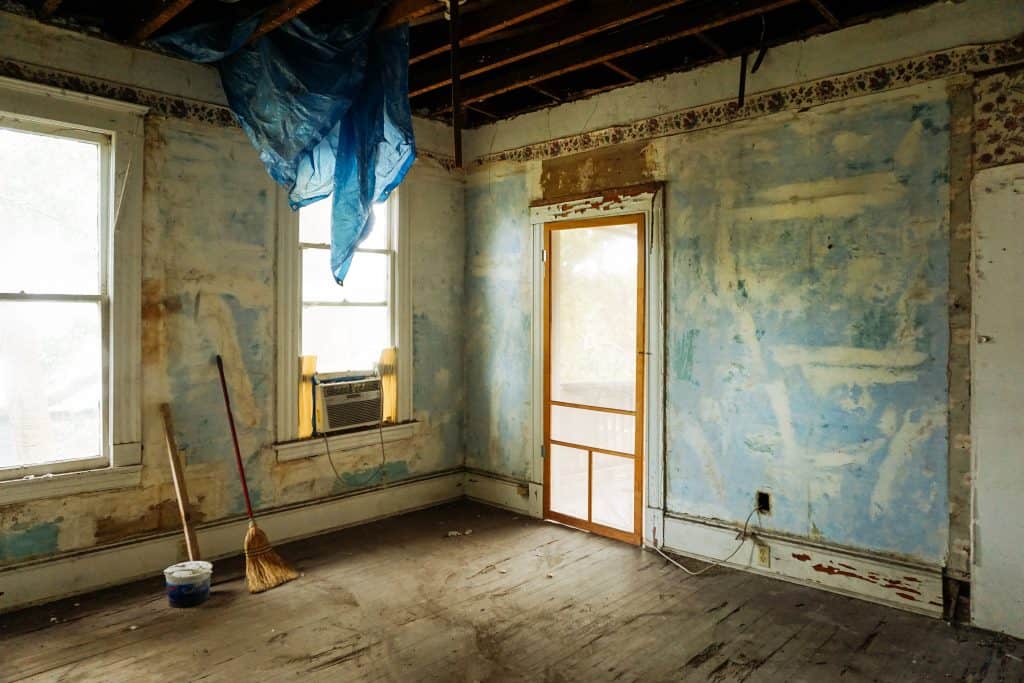Are you about to buy a property with ‘good bones’ that will turn out to be a great investment? Or is it a money pit that will cost you time, money and resources … and ultimately fail as an investment?
In a perfect world, you’ll find the right investment property, won’t need to make many changes and simply watch the value grow. To pull this off you need to consider a range of factors, including strategy, finance, location, street appeal and more.
In this blog, though, we’re focusing on whether a house is worth renovating to increase capital gain or rental cashflow (for more on the above, read this article from Bushy Martin in Money Mag).
So, how do you know if a house has massive upside, or the potential to kill your potential returns?
While some elements are subjective and will depend on your personal preferences or investment strategy, others are clear red flags for anyone. A dingy carpet can easily be transformed into shiny floorboards, but major plumbing issues or poorly designed spaces may not be worth your time.
Investors will especially need to consider the initial costs, the property’s value on the market and who the target tenants are. Will the costs to renovate, fix any issues and bring out its potential be worth the expected returns in the long run? Are these once-off repairs sustainable, or are you just delaying the inevitable down-fall of a house that’s well past its prime?
It will also be guided by how cost effective you can be with the repairs and upgrades. If its smaller, cheaper or even DIY jobs, you might be able to justify the expenses.
So, here’s the questions to ask when deciding if your the house really does have ‘good potential’.
Are there any damages?
You’ll need a thorough inspection on the wear and tear of the house. A new or recently built house may only have a few minor maintenance issues, but it’s the houses that have been standing for years that could pose the biggest threats. Fortunately, many of these red flags are on the surface and easy to spot.
What’s the condition of the material? Rotting wood, cracked plaster and discoloured surfaces are all potential indicators that you need to walk away. Plumbing can be another huge issue. Ongoing leaks, damp spots and damaged pipes could cause you a world of trouble and expose an issue that’s not a one-off repair. Structurally, are there any sloping or sagging beams, uneven surfaces, or holes in the walls?
Finally, make sure to dig deeper and look for major issues such as termites or asbestos. This is where you’ll need to call upon the help of an experienced building inspector.
What materials have been used?
Just like an investment, you want your property to be a long-term play, sustainable and have great foundations. Look for materials that are high-quality and will weather through any conditions, such as hardwood, solid wood, plaster walls or brick.
Unfortunately today materials aren’t always as long-lasting as they used to be, so you definitely need to be conscious about what the long-term maintenance will cost.
What is the layout?
The floor plan of a house is crucial. What is the overall shape of the house and the rooms, how big are these spaces, and more importantly, how flexible are these spaces?
While most rooms will be square or rectangular, you will come across others with odd features, such as low sloped ceilings, unusual angles, a split level, or spaces that are long and narrow. You shouldn’t jump the gun when faced with an awkward or unconventional room, because there are certainly ways of bringing it to life with the right decorating and furniture. However, when the irregular layout has little functionality, no flexibility or wasted space, that’s when it might be a lost cause.
Next is the location of your different rooms and how the house is navigated. Are there adjoining bedrooms? Upon entering, are people faced with a long, narrow hallway that leads off to the different rooms? Residents greatly value aspects such as first impressions, privacy and convenience, so they all need to be carefully considered.
You also need to think about the different types of spaces and facilities present. For example, are there good proportions of public spaces, such as your kitchen and living rooms, versus private areas like the bedroom or study. Are the bedrooms located away from these communal spaces, or are they adjoining and therefore near higher noise levels? Do any of the bedrooms include an ensuite?
Finally, how many rooms are there? Is there storage available or a garage? Remember, changing the layout is extremely costly and requires a lot of work … and that’s if it’s even possible. You’re better off looking elsewhere than trying to knock down walls and rebuild spaces.
What is the design?
The house design needs to be visually appealing, although the nitty gritty will depend on your personal style. You may be after an older style home with unique architectural features, or a more modern feel.
However, there’s a clear difference between being ‘rustic’ and being run-down. Although many cosmetic flaws, whether it be dirty carpets, outdated tiles or fading wallpaper, can be easily improved and redesigned.
But more importantly, whatever style home you’re searching for, the overall property needs to look cohesive and stick to the theme.
How is the lighting?
How much natural lighting is available, and from where? Will you be prone to sun glare in key locations such as the living room or a bedroom? Windows can be very expensive to install or remove, so you want to make sure that there are enough windows and that they’re adequately placed.
Where is the house located?
It’s the one aspect you can’t change, no matter how much money you have to spare. It can be the perfect house visually and structurally, but if it’s in an underperforming suburb, or positioned extremely close to a neighbouring house, its value will be heavily impacted.
Of course, the location and orientation is again subjective to what you’re looking for.
Team up with a property expert
Investing in the wrong property is costly in many ways. Having investment success starts with the right strategy and expert support. Want to Know How? Talk to the team at KnowHow, now.




